- News
- Reviews
- Bikes
- Accessories
- Accessories - misc
- Computer mounts
- Bags
- Bar ends
- Bike bags & cases
- Bottle cages
- Bottles
- Cameras
- Car racks
- Child seats
- Computers
- Glasses
- GPS units
- Helmets
- Lights - front
- Lights - rear
- Lights - sets
- Locks
- Mirrors
- Mudguards
- Racks
- Pumps & CO2 inflators
- Puncture kits
- Reflectives
- Smart watches
- Stands and racks
- Trailers
- Clothing
- Components
- Bar tape & grips
- Bottom brackets
- Brake & gear cables
- Brake & STI levers
- Brake pads & spares
- Brakes
- Cassettes & freewheels
- Chains
- Chainsets & chainrings
- Derailleurs - front
- Derailleurs - rear
- Forks
- Gear levers & shifters
- Groupsets
- Handlebars & extensions
- Headsets
- Hubs
- Inner tubes
- Pedals
- Quick releases & skewers
- Saddles
- Seatposts
- Stems
- Wheels
- Tyres
- Health, fitness and nutrition
- Tools and workshop
- Miscellaneous
- Tubeless valves
- Buyers Guides
- Features
- Forum
- Recommends
- Podcast
 2023 Feedback Sports Range Click Torque Wrench.jpg
2023 Feedback Sports Range Click Torque Wrench.jpg£125.00
VERDICT:
Relatively heavy, difficult-to-hold tool that is more expensive than better alternatives
Covers frequent torquing needs
Nice range of bits
Bi-directional
Price
Size & weight for carrying in a jersey pocket
Tiny grip area
Much winding to set/unset
No thumbwheel
Hard-to-read scale
Recommended not to use to undo fasteners
Weight:
281g
Contact:
At road.cc every product is thoroughly tested for as long as it takes to get a proper insight into how well it works. Our reviewers are experienced cyclists that we trust to be objective. While we strive to ensure that opinions expressed are backed up by facts, reviews are by their nature an informed opinion, not a definitive verdict. We don't intentionally try to break anything (except locks) but we do try to look for weak points in any design. The overall score is not just an average of the other scores: it reflects both a product's function and value – with value determined by how a product compares with items of similar spec, quality, and price.
What the road.cc scores meanGood scores are more common than bad, because fortunately good products are more common than bad.
- Exceptional
- Excellent
- Very Good
- Good
- Quite good
- Average
- Not so good
- Poor
- Bad
- Appalling
The Feedback Sports Range Click Torque Wrench is a home or travel tool for torque application to fasteners. Too heavy to willingly carry in a pocket, and with other critical shortcomings, for the price there are better value and much more user-friendly tools out there.
Torque matters – more than ever. The risk of damaging a component or your bike's frame by applying too much torque, or damaging yourself through too little torque leading to a handlebar, stem or other component coming loose is A Thing. Fortunately there is now a veritable plethora of affordable, accurate, lightweight and easy-to-use torque tools out there, meaning there's simply no excuse for under- or over-torquing fasteners.
In the last few years I've been mightily impressed by two tools – the £60 Prestacycle TorqRatchet Pro Deluxe and the £80 Feedback Sports Range Torque and Ratchet.
Both tools are based on PrestaCycle's excellent platform, including a micro-ratcheting reversible head capable of applying a stupendous 60Nm of force to undo or do up large fasteners – think pedals, crank bolts, that sort of thing. The measured application of torque is limited to 10Nm, which covers the vast majority of day-to-day applications. If you're working on pedals, cassettes, Center Lock brake rotors or some cranksets you'll be needing more like a 30-40Nm tool, and the only common in-between use is the 12-14Nm of a Shimano Hollowtech II crankarm.
Both tools weigh around 70g plus bits and cases – so they are very easily carried in a summer jersey pocket for use on the road or trail. The best torque tool is the one you have on you, otherwise you're just guessing – so portability matters. As does usability – features such as spinning thumbwheels to quickly snug up a fastener single-handed, the ability to undo fasteners without concern for the tool, and to be able to apply force in a controlled manner to minimise the risk of slipping and rounding out a fastener.
With that context, we turn to the new Feedback Sports Range Click Torque Wrench. Feedback Sports has discontinued the previous Range tool linked to above – meet the new Range torque tool. It's quite a change. In fact, the only similarity is the name.
Click’s the name
The new Range Torque is no longer a beam-style tool, which relies on the deflection ('bending') of a known-stiffness length of metal to then trigger a reading on a calibrated scale. Beam-style tools require the user to watch the scale, and stop when the desired torque is indicated. The new Range is a click-style tool, which has an internal spring and a cam system, which applies force down on the spring before 'clicking' out, indicating the desired torque is met. The more you compress the spring by winding it inwards, the more torque is applied before the cam clicks over. So the indication is both audible and physical, as you feel the tool click over.
Unlike the previous Range tool or its Prestacycle cousin, the new Range is bi-directional, meaning it can measure torque applied clockwise or anti-clockwise. Anti-clockwise threads on bikes occur in left-side pedals, drive-side threaded bottom bracket cups, and freewheel hubs. That's about it. And given all these applications require way more than 14Nm torque, this feature really isn't.
So again, coming back to common use cases, the only edge the new Range has over the old one or the Prestacycle alternative is that 14Nm for Hollowtech II cranks.
Speaking of which, in the Range Click instructional video Feedback Sports shows a big red 'X' during the section where it's used to tighten a Shimano Hollowtech II crank bolt. The Hollowtech II bolts are a 12-14Nm spec, so it struck me as a bit odd. Its tech support clarified that yes, the Range Click is okay to use for up to the maximum 14Nm Shimano specifies.
In that same video Feedback says not to use the Range Click to loosen a fastener. This means if you're trying to set up a bike with a bit of trial and error, you'll be constantly swapping between the Range Click and a normal hex tool to fasten and loosen bolts – hardly optimal. Feedback tech support confirms that you can use the Range Click to undo fasteners, but you must take care not to exceed the 14Nm maximum. There's a chance that 14Nm+ might be required to undo a seized or overtightened fastener, and the only way to then guarantee you don't damage your Range Click will be to wind the torque up to 14Nm and then attempt loosening. If it comes loose without clicking, great. If it clicks out, you'll need a fixed tool. This is quite a faff, to wind the Range Click all the way to 14Nm and back – roughly 20 turns each way – and I honestly can't see many people doing this.
So I'm struggling to find a valid reason to regularly need between 10 and 14Nm in the workshop and certainly out on the road or trail, apart from Shimano cranks. And literally zero need to do so for a left-hand thread.
Premium quality
The Range Click feels nice in the hand, with a premium finish. The 13 high-quality bits include 2, 2.5, 3, 4, 5, 6 and 8mm hex, T10, 25 and 30 Torx, plus three long bits – 4/5mm hex and a T25, for the most common applications around stems and brakes. The bits click into the head and are retained with a decent magnet, so the chances of coming out and getting lost are minimal.
The provided case is nicely done, with an internal pocket for a few alternative bits and pieces.
The tool plus all the bits in the case come to a pretty hefty 281g. The tool itself is 148g – exactly twice the old Range, longer and mostly thicker and wider along its length.
Drawbacks
The all-important torque scale is rather hard to read, relying on you squinting to spot when the silver line meets the desired grading on the side as you wind the silver setting-knob up or down. There's a set of even gradients on one side – 2, 4, 6 etc – and odd on the opposite side – 3, 5, 7 etc. The need to wind the scale up and down differs from the old Range or the Prestacycle version, which returned to zero automatically.
This is the first major drawback of the Range Click – the near-constant need to be winding it up or down for very common settings. I'm OK with this sort of thing for occasional torque settings, like when needing to torque a cassette, rotor lockring or pedal, but using the Range Click to work around 3, 4 or 5Nm fasteners gets old real fast.
The second drawback is a lack of thumbwheel to quickly advance fasteners to a snug-enough state to apply torque. This was a key feature of the old Range tool, and is sorely missed.
The third – and most fundamental – drawback of the Range Click is how you apply force to the tool. Being a click-style tool, it's critical that you only apply force where instructed – in this case, to the knurled section just 6.5mm from the end of the tool. For reference, my index and middle fingers are together 40mm wide.
If you apply force any closer in to the tool head than the knurled section – for example by gripping it with your index and middle fingers and your thumb – you will apply excess torque, even though the tool still clicks as though everything is fine. I won't go into depth here on the counter-intuitive and rather complex maths/physics involved, just trust me – there's a very good reason click-style torque tools have a line on the handle where you must centre your grip to apply force. Move your grip closer in and you might as well be guessing.
This need to literally hold the Range Click between index finger and thumb is mirrored in the previous Range and the Prestacycle tools with their wee knobs at the end being more obvious to apply force on – but those tools are half the weight, shorter and, critically, have no click function inherent in the process. The combination of needing to hold a heavier, longer tool right at the end between two fingers, that then moves once torque is hit, leads to a greatly increased risk of bits camming out of fasteners, particularly if the bit has a loose fit due to tolerances or previous use. If you're using the longer bits, the problems of stability and grip are much worse.
In comparison, the Syncros Wrench 2.0 Torque – which I only gave 5/10 – is a much more usable tool because of the wider handle, which allows three or four fingers' grip on it. Yes, it's considerably heavier, and no way is it pocketable, whereas the Range Click is half the weight and in a much slimmer case. But the Syncros is half the price and is much more user-friendly. I never had concerns regarding control and application of torque.
Alternatives
If you need a tool that's genuinely pocketable, accurate and easy to use, in my opinion the best option is now the Prestacycle TorqRatchet Pro Deluxe. It's a tool I have permanently within easy reach and use daily in my commercial workshop – and one I would replace in a heartbeat were it to catch fire.
The Topeak Torq Stick looks okay, but suffers the same tiny grip area right at the end and rather heavy weight, unless you remove all the bits first.
You can buy many other 2-14Nm wrenches that will do a better job for far less than the £125 on ask here. Depending on how small and portable you need, and your likely use – do you need 2-14, or will 4-5-6 do? – you can see the best here in our buyer's guide.
Conclusion
Suffice to say, I didn't get on with the Feedback Sports Range Click in the workshop – and lord I tried. After I'd dropped it for the third time I drew a line under the experience, not wanting to risk rounding out more fasteners.
To be clear – this isn't my first rodeo. I run a boutique bike service workshop for profit, can directly compare and contrast with many other tools of a similar nature – including the previous Range torque tool – and have never experienced usability issues like I have with the Range Click.
I've written extensively about other Feedback Sports products, have found them universally excellent, and therefore am genuinely perplexed how this one got out of the lab. On paper the individual features should work as a product. It's when they come together as a system that the experience disappoints.
Right to reply
We put Mike's findings to Feedback Sports, to give them the right to reply:
Re: "Anti-clockwise threads on bikes occur in left-side pedals, drive-side threaded bottom bracket cups, and freewheel hubs. That's about it. And given all these applications require way more than 14Nm torque, this feature really isn't. So again, coming back to common use cases, the only edge the new Range has over the old one or the Prestacycle alternative is that 14Nm for Hollowtech II cranks."
FBS says: "Pivot bolts on an array of full suspension bikes use reverse threads to stop untightening during use. Reverse threads are also used on some RockShox Fork Lowers. All fit within the 14Nm max force value."
Re: "Feedback tech support confirms that you can use the Range Click to undo fasteners, but you must take care not to exceed the 14Nm maximum. There's a chance that 14Nm+ might be required to undo a seized or overtightened fastener, and the only way to then guarantee you don't damage your Range Click will be to wind the torque up to 14Nm and then attempt loosening. If it comes loose without clicking, great. If it clicks out, you'll need a fixed tool. This is quite a faff, to wind the Range Click all the way to 14Nm and back..."
FBS: "Think of good practice in a professional environment and use a standard hex key – it's the same reason why a car mechanic uses a breaker bar for wheel nuts to undo them and a torque wrench to bring them back up to 120-240Nm...
Swapping between a torque wrench and a standard hex key is also standard practice within a workshop or bike fitting environment – there is no 'trial and error' in setting up a bike. It is either right or wrong. The use of a torque wrench is for finalising the values across the bike (think stem bolts, bars, saddle position etc. and upon assembly, think crank bolts, brake bolts, cassette lockring etc.)
Winding between force values is also standard practice for all click-type torque wrenches – all click-type torque wrenches – but this was not penalised in your review of the Topeak Torq Stick."
Re: "Too heavy to willingly carry in a pocket."
FBS: "The Range Click Torque Wrench is not a trail-side tool. It is a workshop tool. Designed to be used in the workshop or as a tool for traveling mechanics and enthusiasts that like/need the precise operation of the tool when reassembling their bikes at an event or destination. You can put this in your pocket should you wish, but with a plethora of more suitable alternatives – like the Feedback Fixed Torque Ratchet Kit – why would you want to? It should not be penalised for not being as accomplished as something else when it is not designed for that function."
In response, Mike says: "Their own marketing says it can be used 'on the go'. And it comes in a soft roll, not a hard case as you'd expect for a shop tool. They do not say 'not for use out on a ride'. So the comments re weight being higher than their previous model are valid. They do not market it as a 'shop tool'."
[Note: In its description of the tool FBS says: "All of the above are wrapped up safely in the tough, padded case with snap closure that will keep the tools together and protect them from harm while you're out exploring the trails".]
Re: "The all-important torque scale is rather hard to read, relying on you squinting to spot when the silver line meets the desired grading on the side as you wind the silver setting-knob up or down."
FBS: "Being hard to read is purely subjective and is again something else that was not brought up in the Topeak Torq Stick review, despite having the same style of mechanism and arguably more condensed typography and viewing space. Everyone has their own specific optimum viewing distance, but there are ways to circumvent any sight issues."
Re: "The first major drawback of the Range Click – the near-constant need to be winding it up or down for very common settings. I'm OK with this sort of thing for occasional torque settings, like when needing to torque a cassette, rotor lockring or pedal, but using the Range Click to work around 3, 4 or 5Nm fasteners gets old real fast."
FBS: "Seeing as this is a Click-type torque wrench, you need to return it to zero, something that is automatic in beam-type torque wrenches, 100% correct. But you must return every click-type torque wrench to zero, or adjust between force values, again something that is not to be penalised, it is the nature of every click-type torque wrench – just like in your Topeak Torq Stick review, which was not penalised for this mechanism."
Re: "The need to literally hold the Range Click between index finger and thumb...The combination of needing to hold a heavier, longer tool right at the end between two fingers, that then moves once torque is hit, leads to a greatly increased risk of bits camming out of fasteners, particularly if the bit has a loose fit due to tolerances or previous use. If you're using the longer bits, the problems of stability and grip are much worse."
FBS: "If this is the usual action for the reviewer, it is no wonder they dropped the Feedback Click Torque wrench three times. Should this be how they use torque wrenches, common sense might have suggested to stabilise the tool with another hand, stopping any slipping. And if the bolts are rounding between 2-14Nm, it says considerably more about the bolts being used or the mechanic using the tool than it does the tool itself, with its hardened S2 tool bits and workshop design."
In response, Mike says: "Their own video shows it being held between forefinger and thumb."
Verdict
Relatively heavy, difficult-to-hold tool that is more expensive than better alternatives
road.cc test report
Make and model: Feedback Sports Range Click Torque Wrench
Size tested: 2-14Nm
Tell us what the product is for and who it's aimed at. What do the manufacturers say about it? How does that compare to your own feelings about it?
It's for people wanting to safely torque fasteners between 2 and 14Nm.
Feedback Sports says: "The NEW Range Click Torque Wrench replaces its predecessor with solid, tactile click-torque function, a wide measurement range, user-friendly ergonomics, and shop-quality fit and finish. With 13, high precision S2 tool steel bits and a protective, compact, and weather resistant TPU foldup style case, this tool is a perfect companion for safe, secure repairs in the shop or on the go."
Tell us some more about the technical aspects of the product?
Feedback Sports lists:
Kit includes a click-type ratcheting torque wrench handle, 13 high-precision S2 steel bits, and a protective TPU case with loops to secure the tool.
Standard length (25mm) hex bits: 2, 2.5, 3, 4, 5, 6, 8mm.
Standard length Torx ® bits: T10, T25, T30.
Extended length (50mm) bits: 4, 5mm hex; T25 Torx ®.
Torque measurement from 2-14Nm, adjustable in 0.17Nm increments, scale displayed in 1Nm increments.
Dual-sided window display scale allows easier ambidextrous usability and permits larger, easier to read torque setting numbers.
Accurate within +/- 4% for 4,000 cycles.
Torque wrench handle features magnetic, 72-tooth ratchet, dual-sided torque setting window, dual-direction torque measurement compatible for right- and left-hand threaded bolts.
Plastic-free head and handle. PFAS-free tool roll. Plastic-free, 80% recycled paperboard packaging.
1-year limited warranty. Sorry, but Feedback Sports does not offer calibration services for this tool.
Weight of Wrench alone: 148gr* Weight of Wrench in Tool roll with bits: 278gr* Length of Wrench by alone: 144mm Length of Wrench in Tool Roll: 170mm Width of Tool Roll: *These values are subject to change based manufacturing changes and tolerances.
Rate the product for quality of construction:
8/10
It feels well made.
Rate the product for performance:
3/10
If performance is measured by easy, safe use, it scores badly.
Rate the product for durability:
8/10
Feels premium and built to last. No complaints there.
Rate the product for weight (if applicable)
2/10
For the range and application, it's very heavy.
Rate the product for comfort (if applicable)
2/10
It's not comfortable to hold if used correctly.
Rate the product for value:
2/10
Given the price, and performance, value is very poor.
Tell us how the product performed overall when used for its designed purpose
Not well at all. To the point I kept dropping it.
Tell us what you particularly liked about the product
It looks and feels premium.
Tell us what you particularly disliked about the product
The overall instability in use.
How does the price compare to that of similar products in the market, including ones recently tested on road.cc?
Very expensive. This tool is twice the price it should be.
Did you enjoy using the product? No
Would you consider buying the product? No
Would you recommend the product to a friend? No
Use this box to explain your overall score
The fundamental usability issues, constant need to set/unset using a tiny scale, lack of thumbwheel and weight-size for the significant price all add up to a perfect storm of challenges better met by other tools for less money.
About the tester
Age: 47
I usually ride: Sonder Camino Gravelaxe My best bike is: Nah bro that's it
I've been riding for: Over 20 years I ride: A few times a week I would class myself as: Expert
I regularly do the following types of riding: cyclo cross, general fitness riding, mtb, G-R-A-V-E-L
Living in the Highlands, Mike is constantly finding innovative and usually cold/wet ways to accelerate the degradation of cycling kit. At his happiest in a warm workshop holding an anodised tool of high repute, Mike's been taking bikes apart and (mostly) putting them back together for forty years. With a day job in global IT (he's not completely sure what that means either) and having run a boutique cycle service business on the side for a decade, bikes are his escape into the practical and life-changing for his customers.
Latest Comments
- muhasib 3 sec ago
Don't worry it's only 'potential bollards' causing a risk not actual bollards.
- mdavidford 16 min 49 sec ago
I think that's a long-established rule: "Do as I say, not as I do"
- andystow 31 min 50 sec ago
We have a day for this, anyway. The Ride of Silence.
- mdavidford 51 min 33 sec ago
Of course it's not. Don't you know this is the communist wokerati of the Evil Cycling Lobby around these parts?
- Bmblbzzz 54 min 55 sec ago
The losers include drivers, but everyone living and breathing in the proposed area is a loser if it doesn't go ahead.
- Chris RideFar 1 hour 24 min ago
The title of this article states a causal relatioship between the variables of cycling and health. The research design only allowed for...
- adamrice 1 hour 43 min ago
Look, I'm glad the bus is ok, but the question all cyclists are concerned with is: is the bike OK?
- Steve K 2 hours 6 min ago
I think the main reason is "we have to so you should too".
- karlssberg 2 hours 14 min ago
I wonder if diverting funds, ahem, I mean the cycle route to a trunk road is a way a way for the council to fix pot holes and repaint the road for...
- Jogle 2 hours 35 min ago
Is that Michael Green, Corinne Stockheath and Sebastian Fox? If you can get money per names on the ballot paper, I'm sure he can come up with a few...
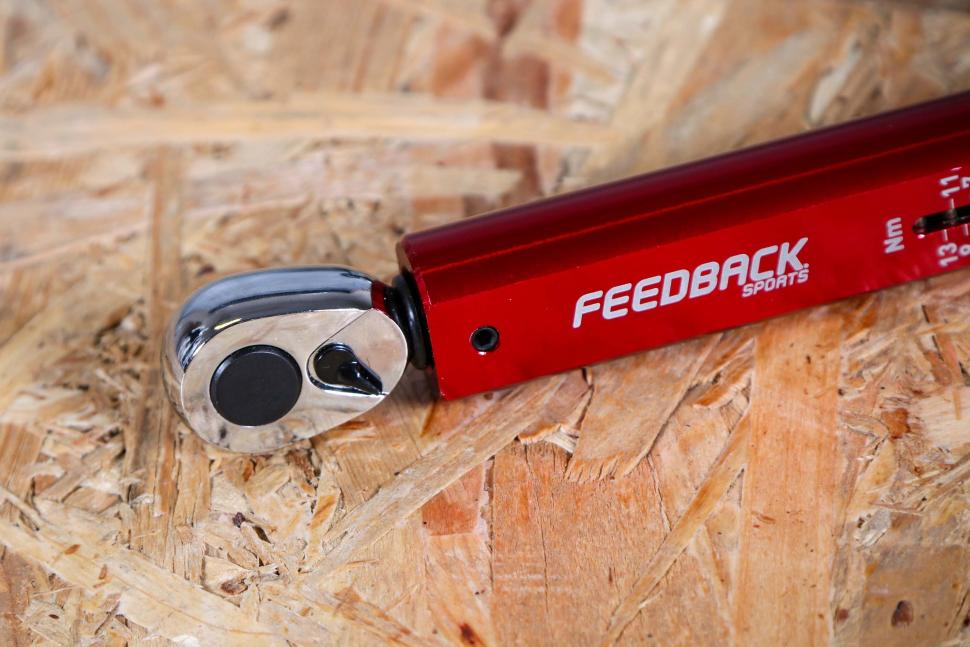
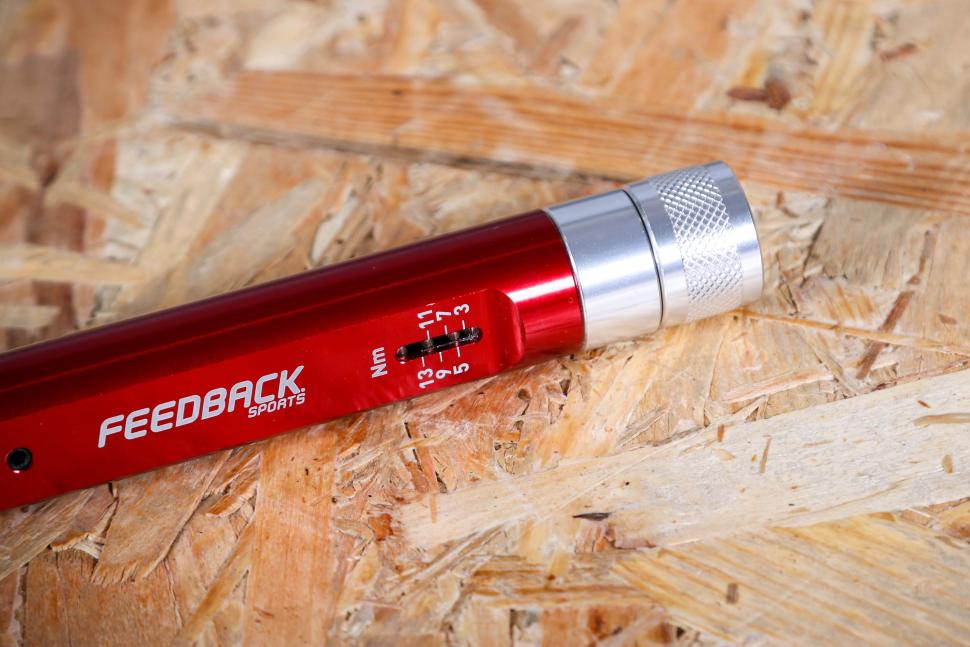
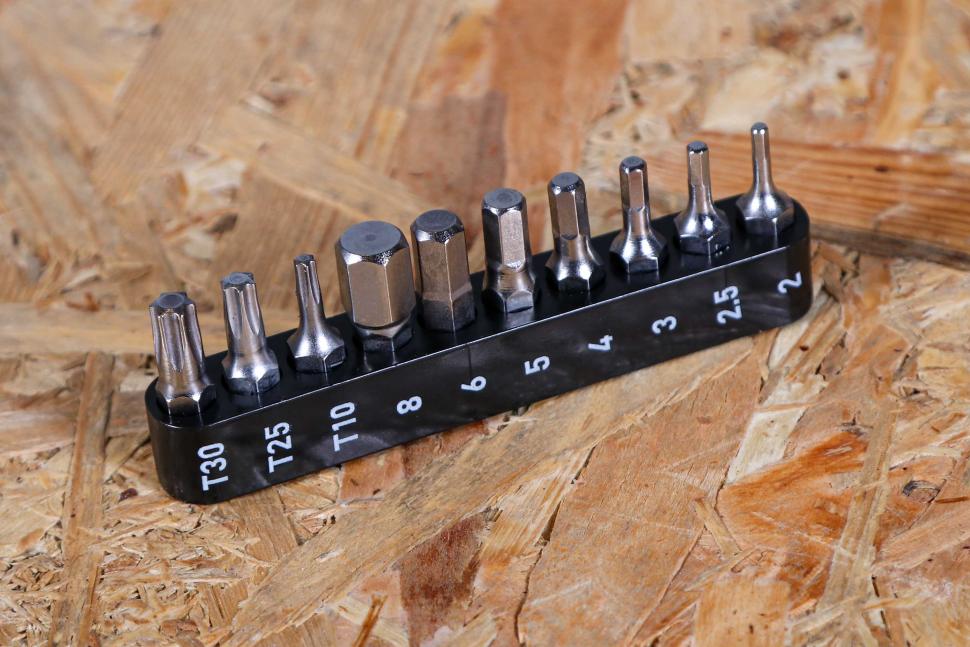
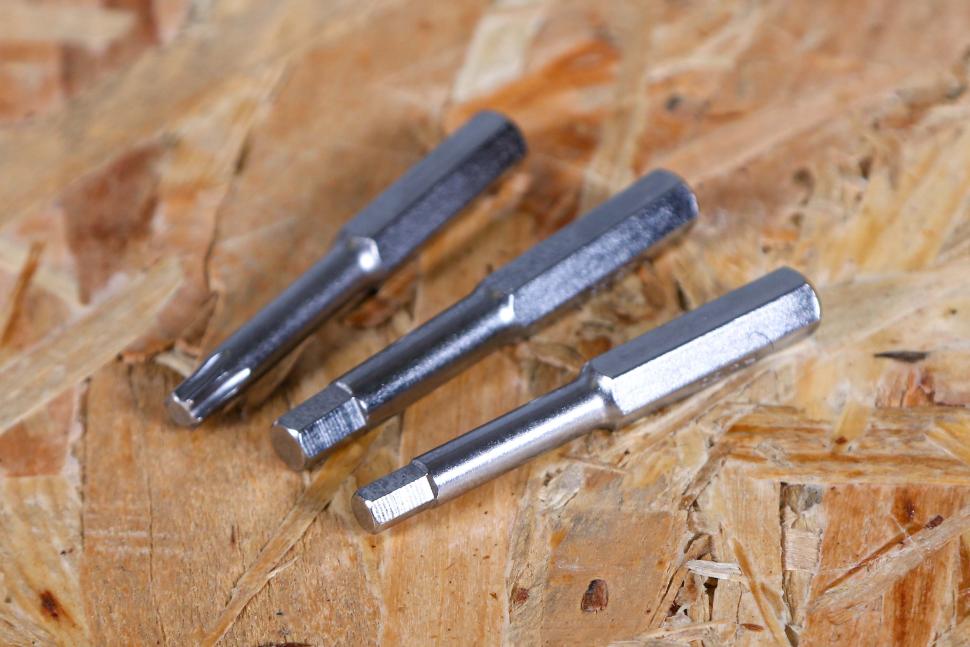













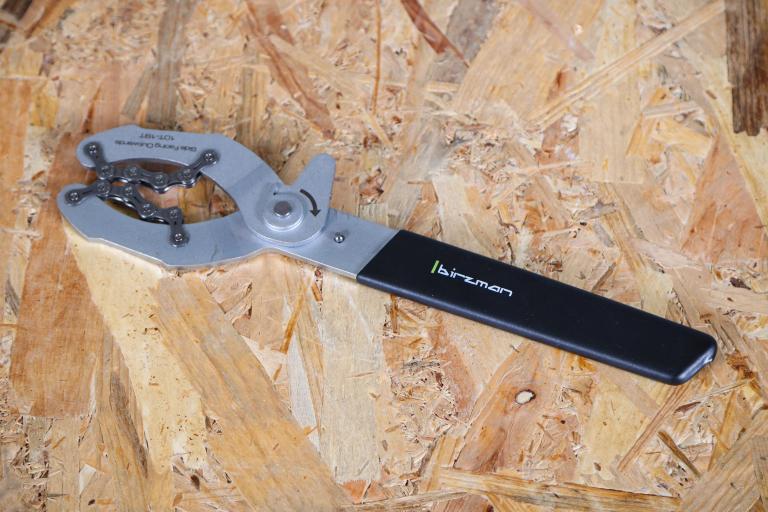
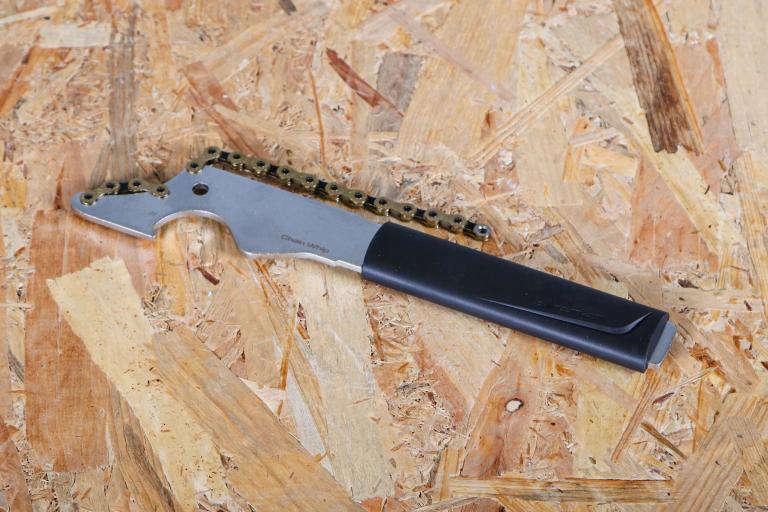
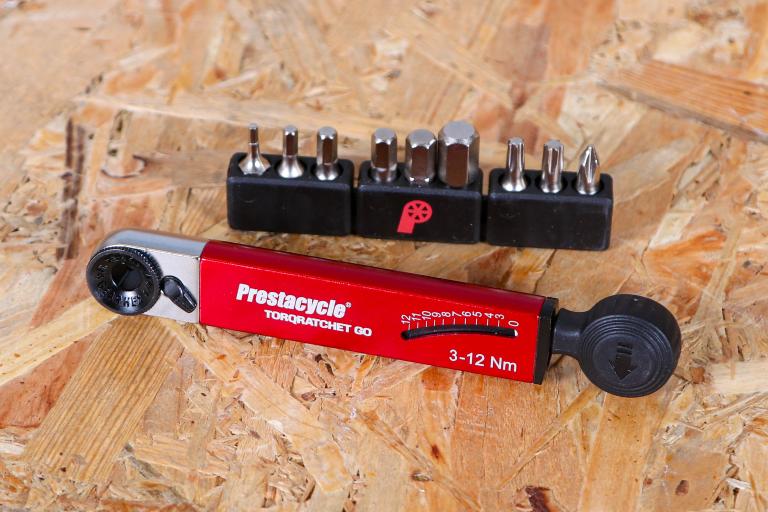
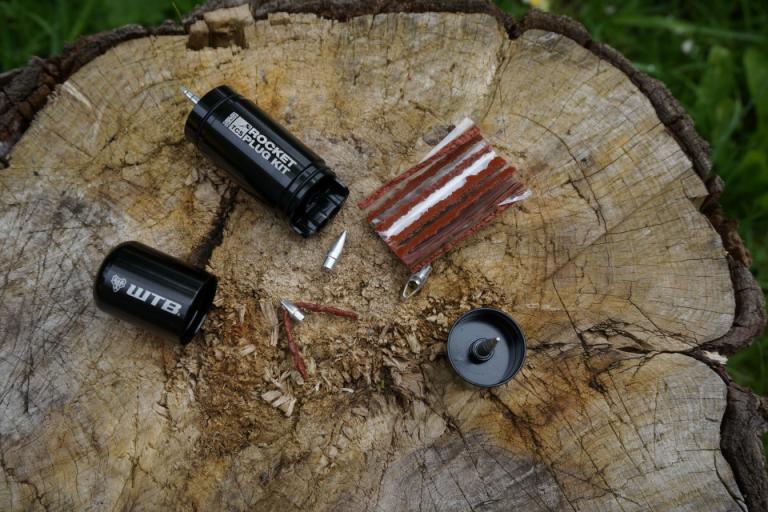
Add new comment
11 comments
I've never laughed so much while reading a review! More torque wrenches for Mike!
I was suprised by such a low score for a Feedback Sports product, so I read both the review and FBS' responses with interest. My two cents:
I do think Mike has been slightly harsh regarding features that are common to all (or nearly all) of the nearly-ubiquitous click-type torque wrenches on the market. They all require you to twist the end to set the desired torque reading. Many of them have pretty tricky to read scales. All state you shouldn't use them above the specified torque (and therefore shouldn't use them to undo tight/seized bolts). They all require force to be applied at the right location for the torque to be accurate.
That said, given how many other options they are for click-type torque wrenches, I have to agree with Mike that this one seems both extremely expensive and poorly designed. The dealbreaker for me is needing to apply force specifically to that little knurled section - most click-type torque wrenches have a hand-sized handle for you to use, and are calibrated assuming a normal grip on that handle. Such a compromise might be understandable if the tool was intended for trailside use in order to keep the form factor down, but for a tool that you're not trying to carry in a jersey pocket, I would go for something a bit bigger and easier to use. Or possibly if it was cheap it would be an acceptable compromise - but this is right up there with the most expensive options out there.
Fair comment. BUT: increasingly bike shops and keen mechanics are moving to pre-set torque tools like the Prestacycle TorqKeys (or the various rebadgings of them) - 3-12Nm options, which also give the huge benefit of being able to safely undo fasteners. I think my gripe about seemingly endless winding up and down was acute because the previous beam-type Range tools didn't need to do that - they reset to 0 instantly the torque was removed.
True that. But most click-type tools afford a handle big enough to grip with your whole hand centered on the calibration point - or at least three fingers + thumb. This is where the combination of weight, click-type and less-than-one-finger-wide grip area came together in a ball of disappointment.
"so they are very easily carried in a summer jersey pocket for use on the road or trail. The best torque tool is the one you have on you, otherwise you're just guessing – so portability matters."
OMG, Is this meant seriously?
You mean you *don't* take applying the correct torque seriously?
Noting that how seriously any given rider should treat torque application is down to a mix of experience, component/frame type and material. Doing up a stem or seatpost bolt on a 1950's steel bike or over-engineered component you have a lot of room for error. On a high-end low-weight-engineered carbon stem or seatpost clamp, almost none. Even 10-20% above spec - easily done even by a trained hand - can see the component or frame fail, either immediately or whilst being ridden. OMG indeed.
Just tighten until you hear a crack and then loosen it off a bit
I just tighten up until I think it won't move, then torque up properly at home.
What I mean is are we really in a world now where one has to lug around an effing torque wrench to fix a bike on the road?
Mind you, it would explain a few other things I have trouble getting my head around.
Thanks by the way for explaining torque and carbon bikes to me; it would seem, that the problem lies somewhere around there...
Due to over a century of building basically the same bike design there's no need to worry - enough "proper bikes" to last you until you wear out I suspect. (Even parts, despite the efforts of the industry to "improve" them).
Just remember to give them a check by lifting them up before you buy to make sure you don't buy one that's suspiciously light.
Meanwhile those who are in the market to keep up with the Joneses have some tools they might want to make use of to avoid "bricking" their exquisitely- engineered machine.
Fortunately the weight of extra tools you might need doesn't outweigh the weight saving, and if course your wallet is massively lightened...
Some people like lightweight bikes, or bikes with hidden fixings. That sometimes means the fixings are engineered to closer tolerances that require attention to torque application. Every fastener has its limits, on most older steel or heavy alloy bikes you could get things tight enough to be safe by cranking down without fear of damage. That said I've repaired many older bikes where people have snapped fixings through excess torque.
As a rule I don't carry a torque wrench - just a decent multitool for emergency use. I do carry a torque tool - the aforementioned Range or Prestacycle one - if I'm riding a new bike / component that will inevitably need tweaking after a few miles to get a position right. These tools are light and small enough not to be an issue to pocket, and I have them anyway for home use.
My point in the review was that the Range Click is heavy enough to be an issue to carry on any ride.
There is a detailed explanation of why it matters if you "hold it wrong" in the YouTube link below. If you're short of time, skip to about the middle and understand the diagram.
Tl;Dr there is an offset between the pivot point at the nut and the pivot point of the click-detent.
https://youtu.be/0f746pF1xc0